New Delhi: A cultural renaissance is underway. It has happened around the world, and ‘Bharat’ is next in line—courtesy the Indira Gandhi National Centre for the Arts. “It takes place differently everywhere. Europe’s renaissance was different,” admits IGNCA chairman Ram Bahadur Rai. This 21st-century cultural resurgence, being ushered in by the centre located in Delhi’s Janpath, is fast-paced, robust, and technologically driven, with digital courses on Vastu, the Vedas, and art appreciation.
Even under the Narendra Modi government, the IGNCA remains a cultural repository, a chronicler of all forms of art, and the custodian of ancient texts. But culture is now a lifestyle, and even the Vedas are in vogue. India is the mother of democracy—with sengol as the cultural ornament propelling it forward. Millets are the key to a prosperous future, and they’re all framed by philosophies that reside in ancient texts.
The Vedas, in particular, have changed form. From being transmitted only through a faction of Sanskrit scholars, they are no longer restricted to domain experts. IGNCA’s Vedic Heritage Portal—inaugurated last year by Union Home Minister Amit Shah—has erased the middleman, ensuring that the growing number of Hindu-culture enthusiasts can substantiate what would otherwise merely be thoughts.
Described as a “one-stop solution” for all things Vedas, the portal contains transcriptions of ancient texts alongside recitation (with the correct accent). It’s effectively a singular treatise on ‘Vedic wisdom’, and it’s also available in audio-visual form.
For three decades, the institution belonged to Delhi’s elite. It was controlled by 10 Janpath, the residence of Sonia Gandhi. It was located as such so it was easy for her to access—IGNCA chairman Ram Bahadur Rai.
“They are not only identified as scriptures, but also as the fountain head of Indian culture and human civilization,” reads the website.
The IGNCA also has a website dedicated to sengol. It’s a symbol of the government’s narrative—a talisman representing the shedding of servility and newfound freedom. It was used to inaugurate the new Parliament building, and its history was heavily contested. With the website, which also includes an FAQ, the centre packages the sengol neatly, merging its cultural, political, and historical significance.
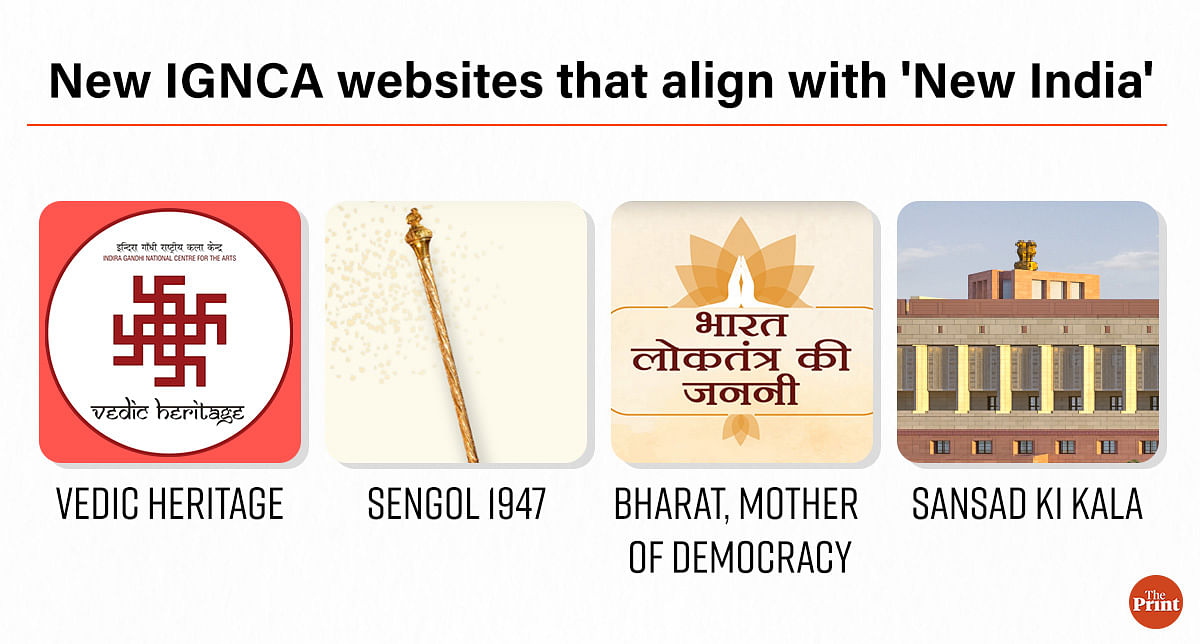
The IGNCA has always stood for the meshing together of cultural frames, but going by the scale at which ‘Vedic traditions’ have been validated, they supersede most barriers. According to IGNCA member secretary Sachchidanand Joshi, it’s a product of ignorance that the Vedas are conflated with a particular religion. “They’re a way of life.”
Also read: Indira Gandhi National Centre for the Arts finds new, smaller home at Janpath Hotel
IGNCA has transformed—it’s for ‘New India’
The essence of IGNCA—how it’s perceived in the cultural world—has undergone a rather dramatic transformation.
“For three decades, the institution belonged to Delhi’s elite. It was controlled by 10 Janpath, the residence of Sonia Gandhi. It was located as such so it was easy for her to access,” declares Rai, his voice deliberate and his tone measured. He’s a man with many lives: as organising secretary in the 1970s to the Akhil Bharatiya Vidyarthi Parishad (ABVP), the student wing of the RSS; then as a stalwart of the JP movement, one of the first to be arrested during the Emergency.
Artists and cultural experts previously associated with the IGNCA in the pre-Modi era are no longer involved. There were once lectures by Saeed Naqvi on Urdu poets like Kaifi and Shaukat Azmi, and Hindi poet Ashok Vajpayee was a trustee. The Urdu festival Jashn-E-Rekhta, until 2018, was held at IGNCA.
Two photographs in his office hold prime real estate. One is from 1907, featuring Maharishi Sri Aurobindo. The other depicts Prime Minister Modi, surrounded by snow-capped mountains, arms wide open. He presents a grandiose, almost god-like figure.
Artists and cultural experts previously associated with the IGNCA in the pre-Modi era are no longer involved. There were once lectures by Saeed Naqvi on Urdu poets like Kaifi and Shaukat Azmi, and Hindi poet Ashok Vajpayee was a trustee. The Urdu festival Jashn-E-Rekhta, until 2018, was held at IGNCA. While it has expanded in terms of scale and prestige, it no longer takes place at the centre.
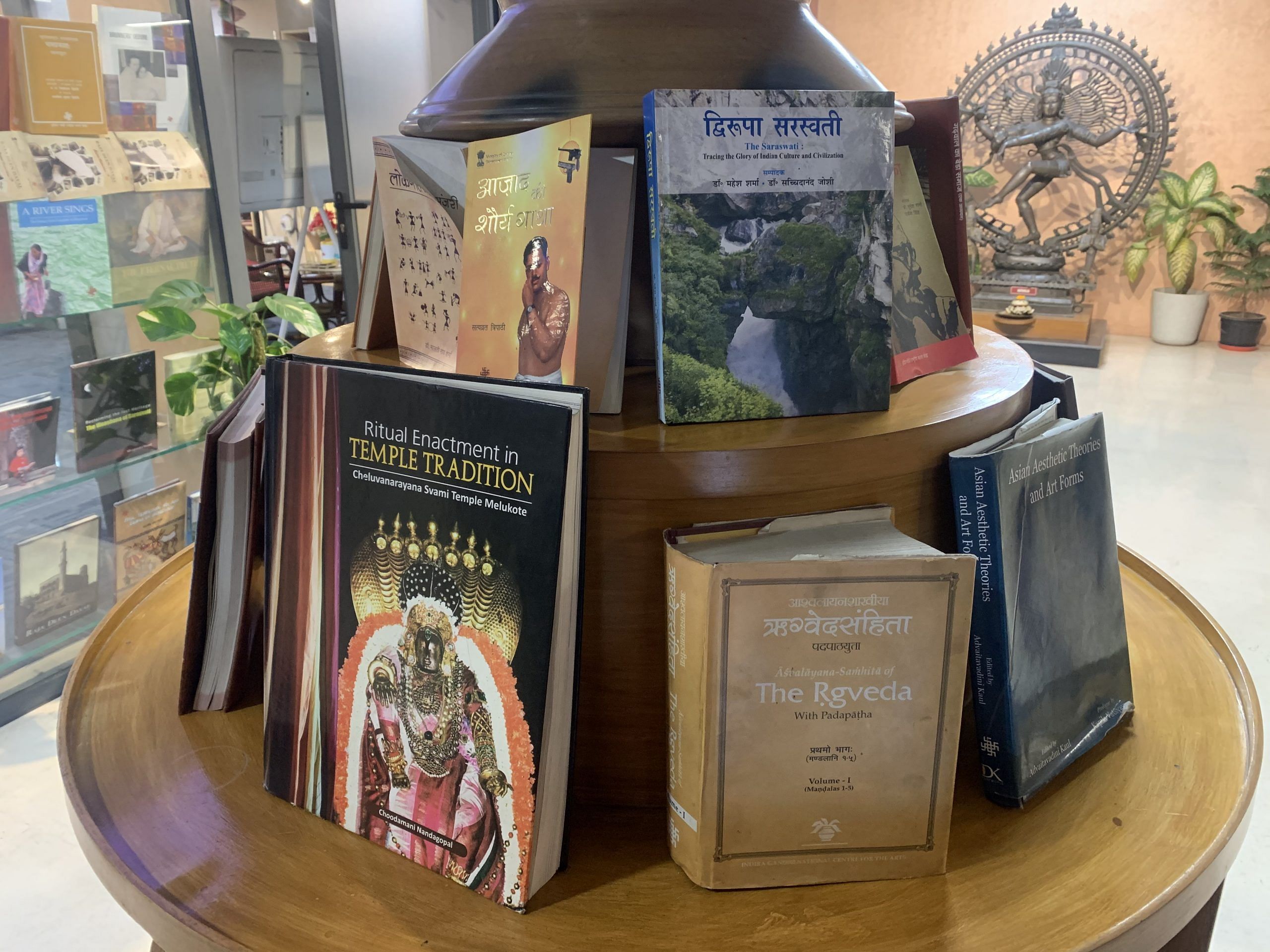
The IGNCA no longer seeks out the ‘old guard’ for work, and if they do, the answer is often no. However, there has been no wave of resignations. Working at IGNCA is a government job, and that continues to be sacrosanct.
Its recent work has two arcs that bookend the government’s preferred image of the New India story: one is the story of democracy, the other of the Dancing Girl.
When Prime Minister Narendra Modi declared India as the mother of democracy at the UN, the entire world went into shock. We have to trigger these thoughts in subtle, innovative ways. Attention spans are short, and the Indian voter is young. They need to understand their responsibility, their obligation
—Sachchidanand Joshi, IGNCA member secretary
In their Republic Day Tableau, the ‘history’ of India’s democracy has been reduced to a godly priest-like figure who appears to be channeling democracy––given how devotedly the rest are looking at him. The group of models own “first prize” at this year’s parade. It’s a “3D” representation of India as it was: an inclusive, egalitarian utopia.
“When Prime Minister Modi declared India as the mother of democracy at the UN, the entire world went into shock,” says Sachchidanand Joshi. “We have to trigger these thoughts in subtle, innovative ways. Attention spans are short, and the Indian voter is young. They need to understand their responsibility, their obligation.”
It’s been disputed and scoffed at by historians, but an exhibition at last year’s G20 summit was yet another attempt to integrate India’s identity as the harbinger of democratic traditions into the mainstream, neatly packaged for a new, global audience. One of the artefacts on display was the Dancing Girl, a sculpture depicting a nude young woman. For Joshi, the formula is simple. Her confidence, her nonchalance is a clear indicator: women were decision-makers, part of political processes, and have been so since the Vedic age.
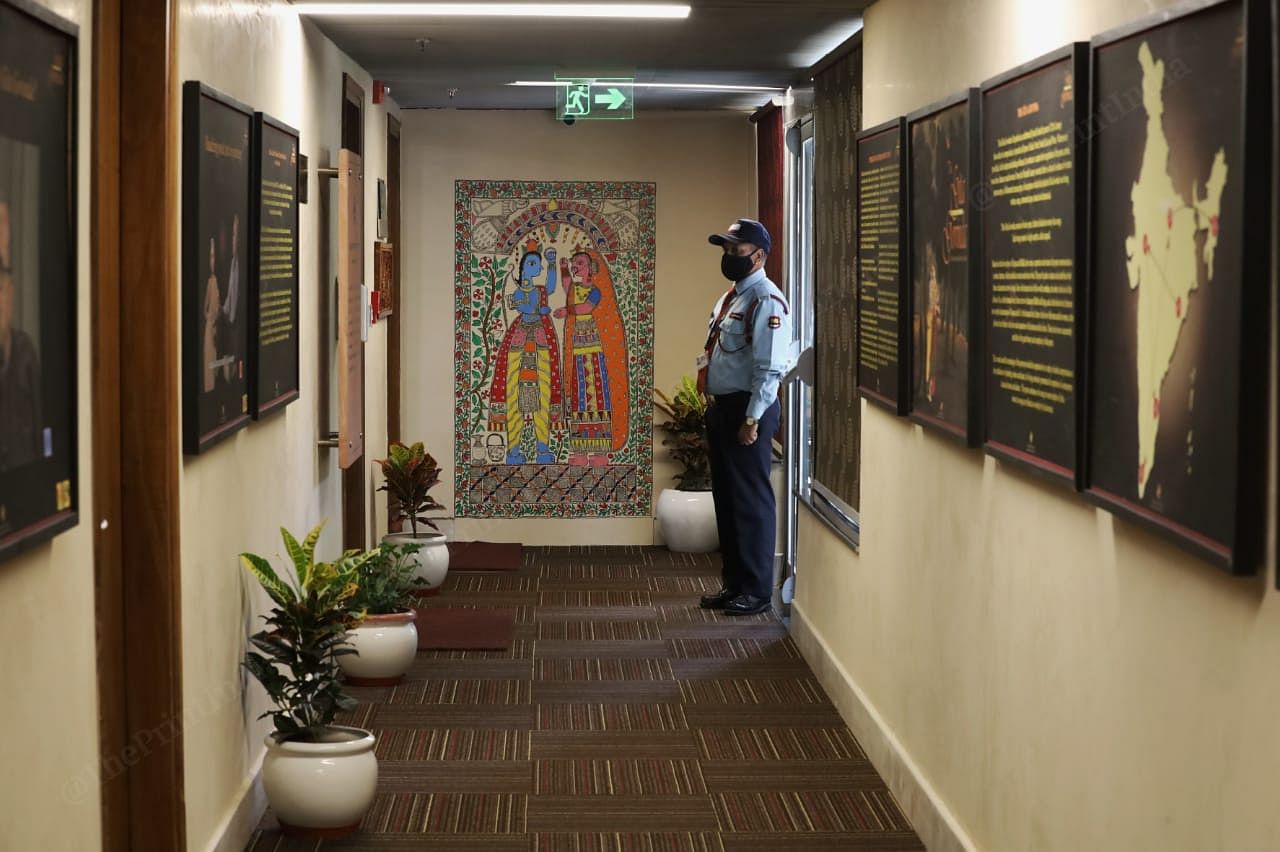
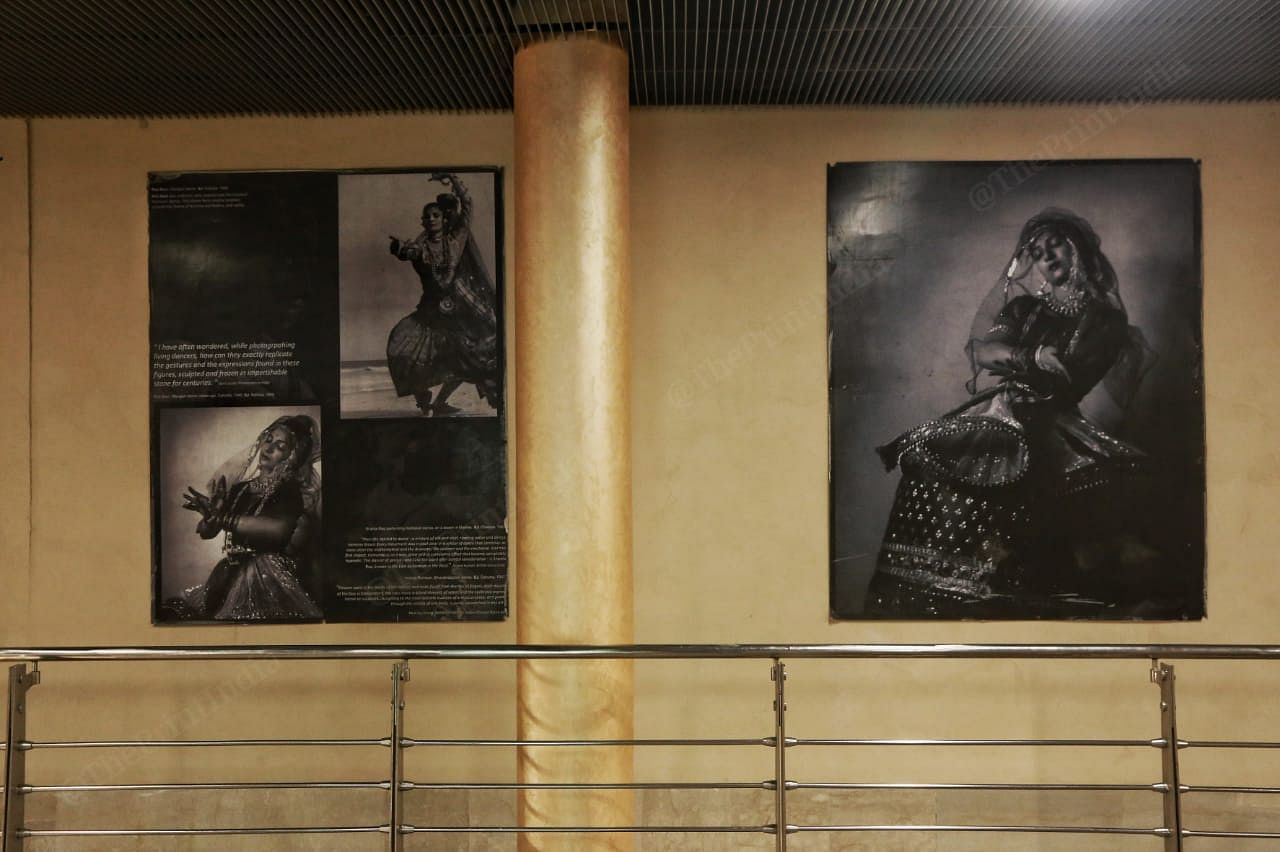
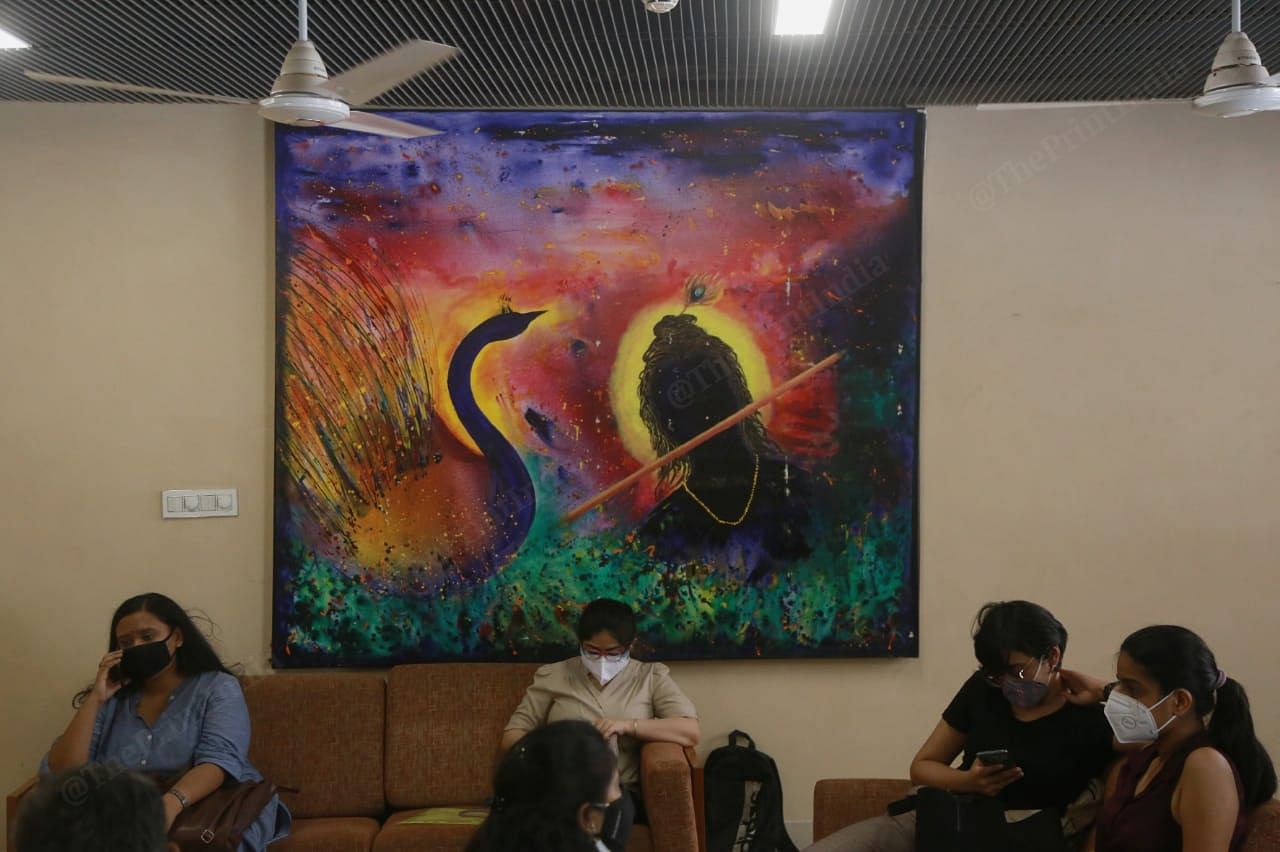
“The Vedas encourage discussion and dialogue. In every ‘kaal’, there is talk of responsible and people-oriented governance. Even in the Ramayana, Dashrath consulted a Rajya Sabha before crowning Ram,” announces Joshi.
Instrumental in spreading the message, there’s a new clutch of cultural czars. Writers, historians, artists, curators are gearing up for the renaissance. In certain cases, the old are speaking today’s language—an exhibition, titled Jana Sangh, boasted India’s biggest art names—and their work was inspired by PM Modi’s Mann Ki Baat radio address.
Art critics are next in line. In an interview earlier this month, RSS chief Mohan Bhagwat announced that Sanskar Bharti, the cultural body of the RSS, having established itself as an art-world powerhouse, would now focus on “building a pool of art critics” who understand the Sangh’s ideology. While art isn’t, art criticism is still controlled by “a handful of people” who believe in “building insecure societies.”
Instrumental in spreading the message, there’s a new clutch of cultural czars. Writers, historians, artists, curators are gearing up for the renaissance. In certain cases, the old are speaking today’s language—an exhibition, titled Jana Sangh, boasted India’s biggest art names—and their work was inspired by PM Modi’s Mann Ki Baat radio address.
The IGNCA functions as an autonomous trust under the Ministry of Culture. A couple of years after the BJP was elected, Rai and Joshi were inducted into the fold in 2016. At the time, the Congress sounded the death knell, predicting the saffronisation of IGNCA, saying it would be swallowed whole by the government.
But according to Rai, they don’t seek “permission from the ministry” before conducting research.
Also read: RSS influence over govt institutions grows with new IIMC & Prasar Bharati appointments
From elite space to a branch of RSS
In its previous avatar, things were different. The IGNCA was regarded more as a research institution, known less for pomp and pageantry. IGNCA is currently biding its time at the refurbished Janpath Hotel as it awaits its move to Jamnagar House––a new building part of the gargantuan Central Vista Project. At the time of its first exhibition, in the mid 1980s, it didn’t have a building at all.
Held at Ravindra Bhawan, its inaugural exhibition in 1986 was titled ‘Kham’, a Sanskrit word meaning space. Spanning across cultures and regions around the globe, it presented an abstract interpretation of architecture’s connection to the cosmos—whether it was a minaret or a spire, there were always elements facing skywards. It explored a range of spaces, stretching from the Acropolis to as close to home as Fatehpur Sikri. “It covered cultures and beliefs across the world,” says photographer and curator Ram Rahman, who was also part of Kham. He hasn’t worked with the IGNCA in over 10 years.
Back in the 1980s and 1990s, resources were ample, the institute was flush with funds, and Kapila Vatsyayan exerted a great deal of control over the research conducted. While there was space given to other religions and cultures, the work was heavily Sanskritised, with a significant emphasis on the Vedas and ancient Hindu texts.
“It was very much a syncretic exhibition. It represented the idea of IGNCA, which was exactly that: a space that looked at the syncretic culture of India,” he says.
The exhibition was conceptualised by Kapila Vatsyayan, the “grand matriarch” of cultural research—the fulcrum on which IGNCA operated. Back in the 1980s and 1990s, resources were ample, the institute was flush with funds, and Vatsyayan exerted a great deal of control over the research conducted. While there was space given to other religions and cultures, the work was heavily Sanskritised, with a significant emphasis on the Vedas and ancient Hindu texts.
“We were seeking Indian ways of reckoning, realising that there was ample richness in India,” said a cultural expert who did not want to be named.
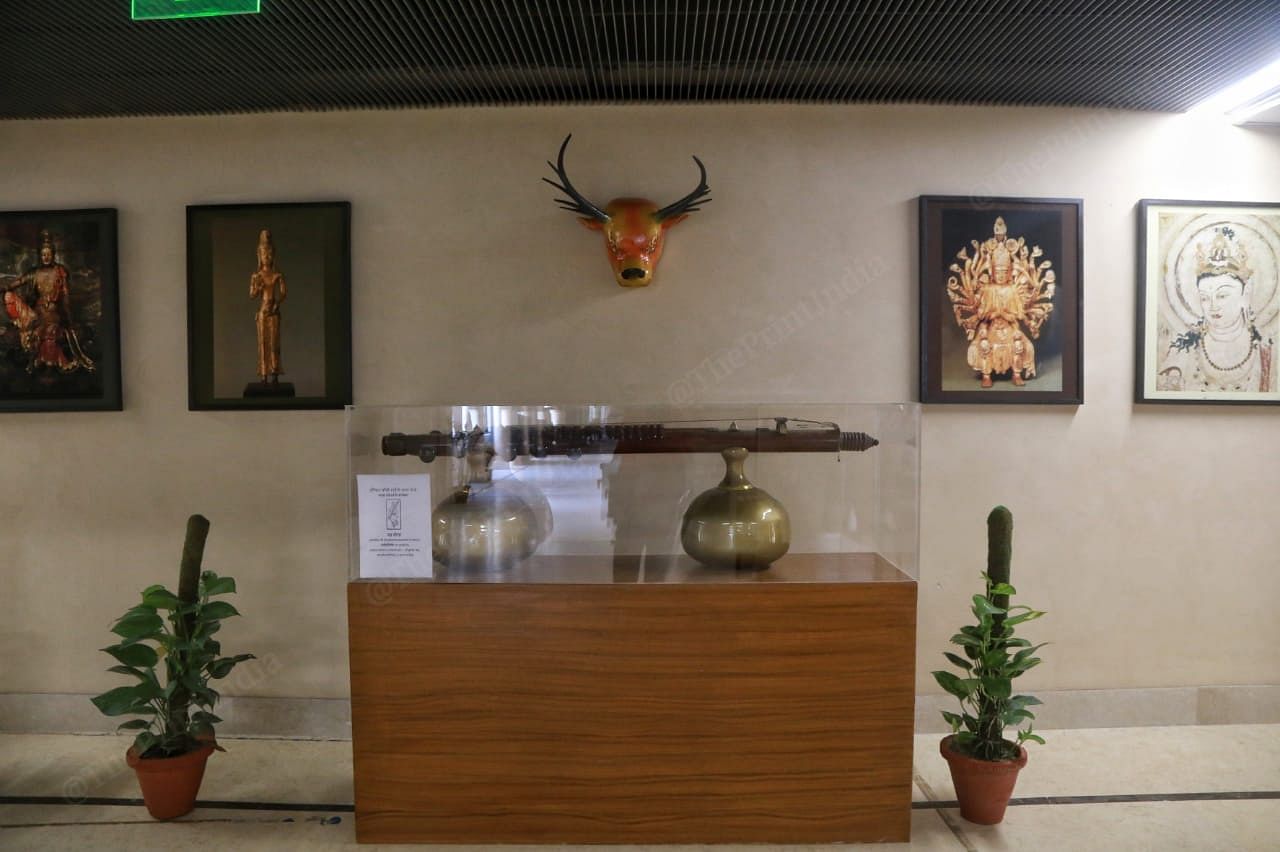
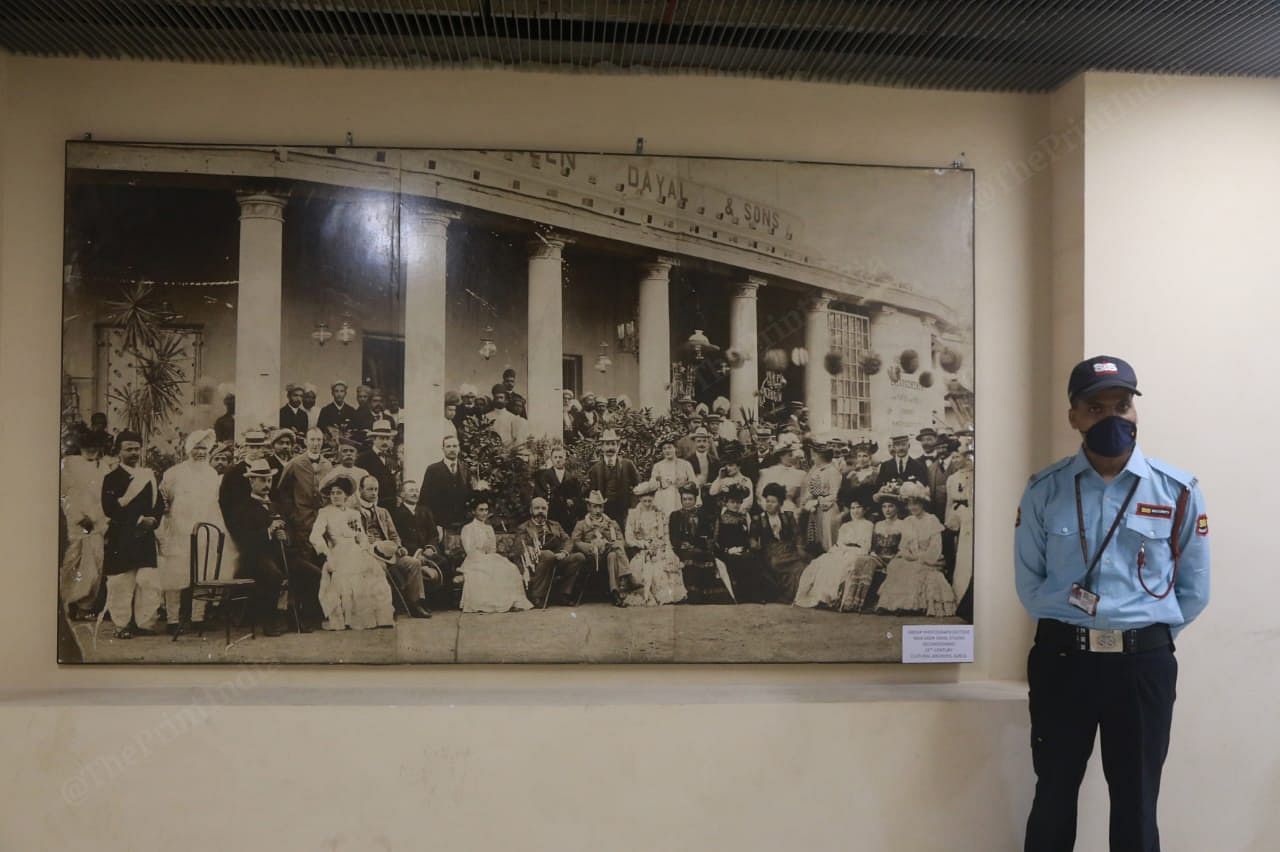
Vatsyayan, who died in 2020, “had it all.” She was the catalyst for what is regarded as a “special time” in cultural history. She had the resources, and they were converted into innovative, creative ways of artistic and aesthetic production.
Since its inception, the IGNCA has expanded, but initially, it operated with five compartments working in conjunction. Basic cultural research requirements were fulfilled, which until then hadn’t been addressed. One department, the Kalakosa, simply looked at key terms and how they should be described. While this may sound rudimentary, “it had a tremendous impact,” according to the cultural expert cited earlier.
Over the last 10 years, the cultural makeup of IGNCA has completely changed. It’s become a branch of the RSS—Ram Rahman, photographer and curator
One of the projects introduced was the ambitious curation of an encyclopaedia of the arts, an all-encompassing guide to all things Indian art.
However, even at the time, there was hushed criticism. IGNCA was turning out to be an elite space, primarily comprisinghighfalutin Sanskrit scholars.
“Like most other institutions, it had elite tendencies. But it fulfilled a need,” the individual added.
Various projects by IGNCA are pioneering experiments. The National Manuscripts Mission, established in 2003, is a meticulous attempt to preserve the country’s textual tradition. According to the website, there are “10 million” manuscripts, many of which are yet to be unearthed. It’s a constant work in progress––it came into the forefront during IGNCA’s previous administration and remains heavily advertised. On the website, the IGNCA logo is flanked by the G20 logo, as well as the Azaadi Ka Amrit Mahotsav graphic.
However, projects can continue even if the tenor shifts. “Over the last 10 years, the cultural makeup of the institution has completely changed. It’s become a branch of the RSS,” claims Rahman.
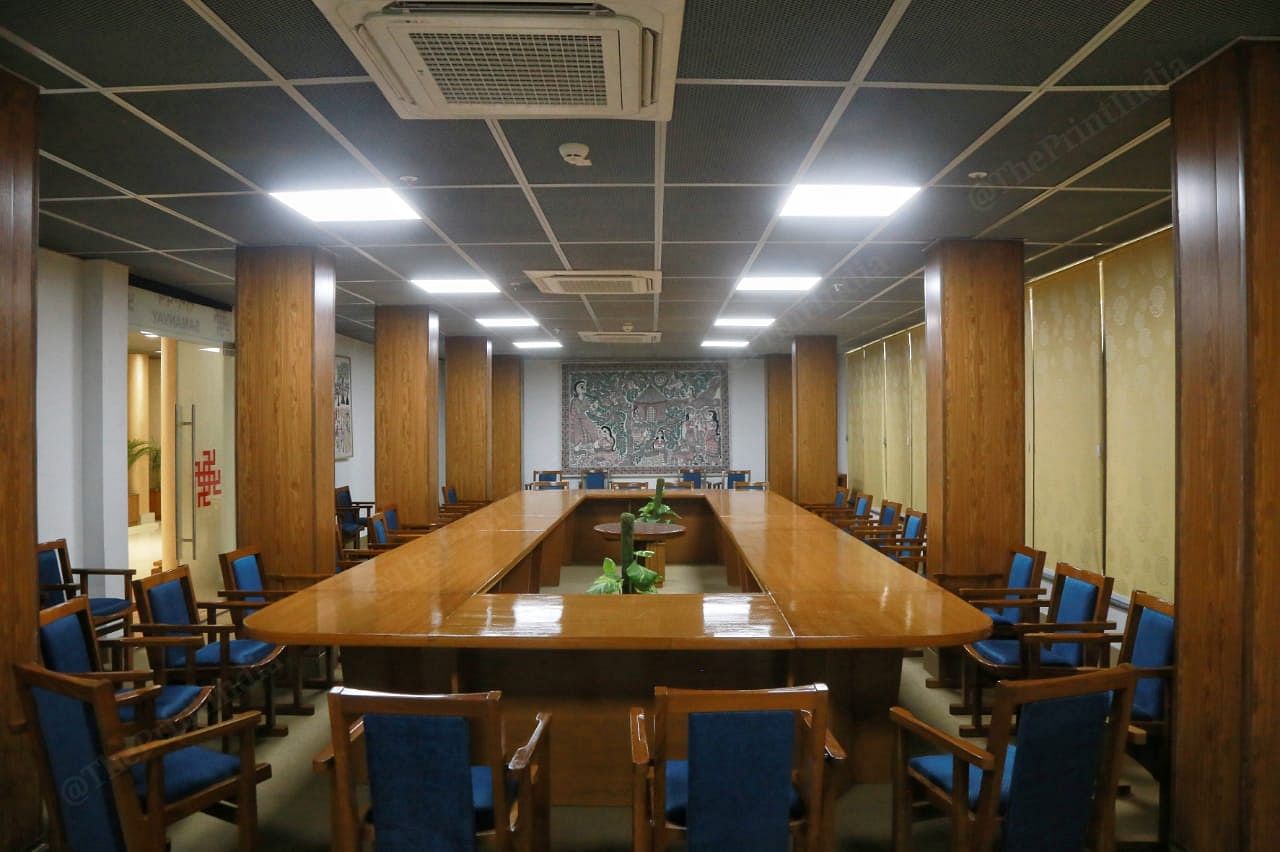
Also read: The chaiwala-to-PM story is the stuff of museums. But the new Modi gallery fails to tap it
IGNCA in tandem with govt narrative
The government typically unveils long-suppressed truths, hidden by the usual cabal of colonisers—the Sultanate, the Mughals, and the British—and the IGNCA gives them weight.
On 22 January, a massive political project reached its zenith: the pran pratishtha at Ram temple in Ayodhya. About a week later, IGNCA released a book and held an adjoining seminar on the Ramayana. Last June, an “international” seminar took place on the Ramayana and its connection with South East Asia.
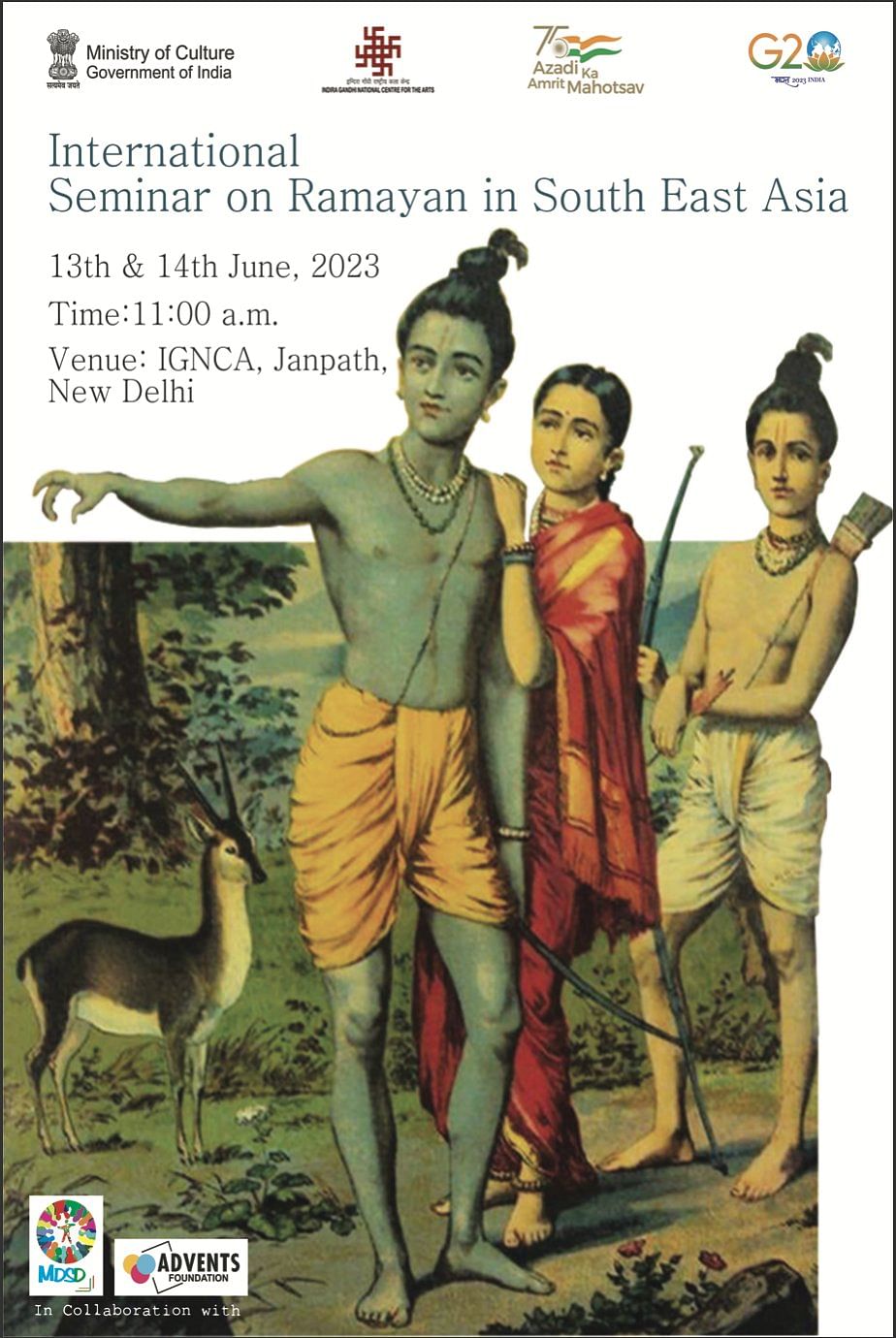
Prime Minister Modi was the first recipient of the “Ramayana of Shri Guru Gobind Singh Ji.” He had first mentioned him at the groundbreaking ceremony of the temple, and the book ostensibly followed suit. According to an IGNCA pamphlet, during the reign of Aurangzeb, Guru Gobind Singh had saved the Kashmiri Pandits from forced conversion and aided in the survival of their religion: Hinduism.
It’s not mere coincidence. Joshi’s analogy is the story of the chicken and the egg—it’s difficult to discern which comes first.
“Sometimes we do research and it becomes part of public conversation, and people get interested. But research isn’t being done on popular demand. No one is coming and telling us what research to do,” he says.
But sometimes, it holds popular appeal. Since 2021, 14 August has been designated as Partition Horrors Remembrance Day—a day to mourn those killed during the Partition of India. The IGNCA published a volume, edited by Joshi, titled Revisiting Partition: Tales of Displacement, Horror, Negation, and Reconciliation, documenting Partition narratives, some of which had never been told.
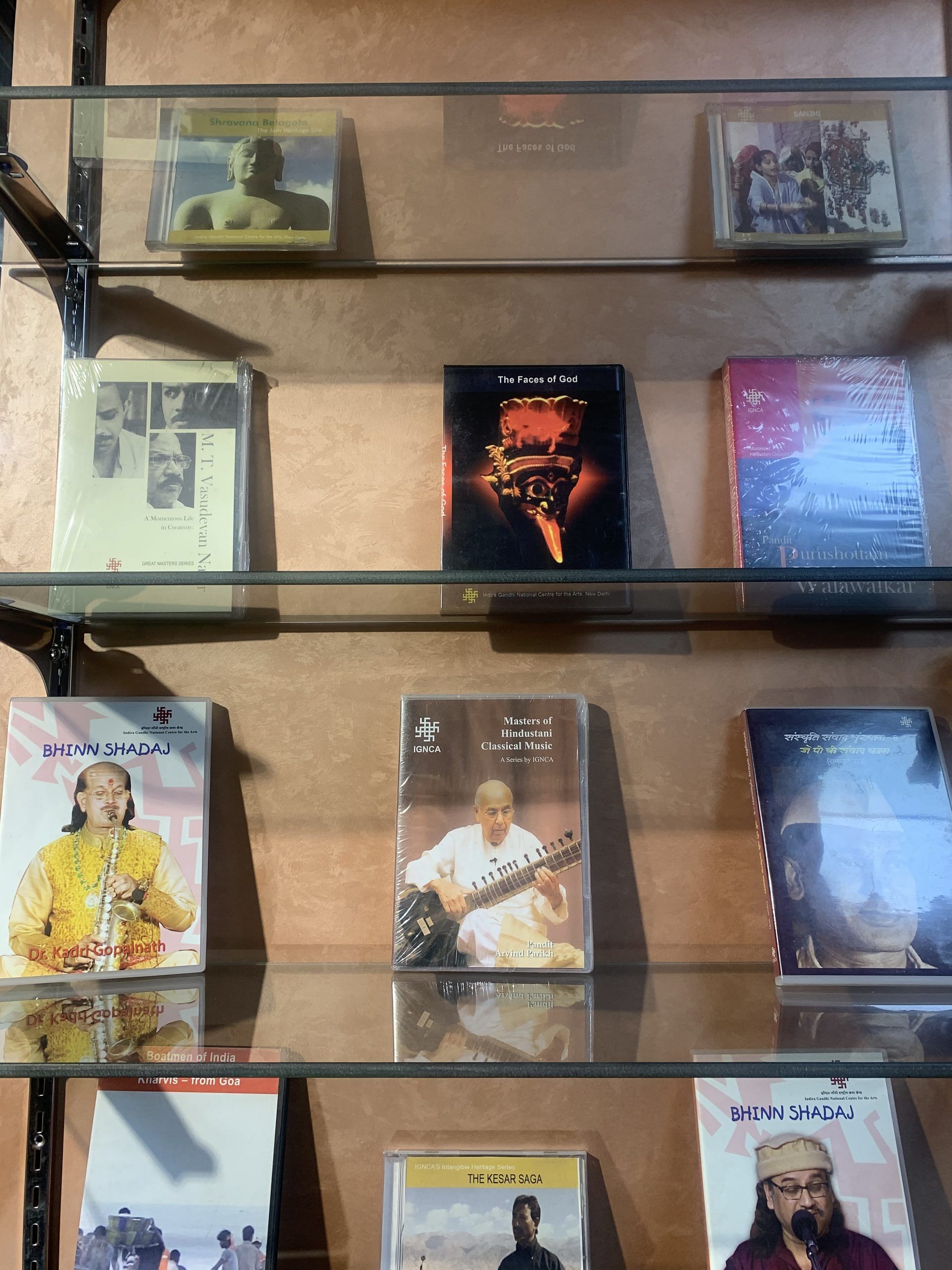
“Lakhs of people were displaced, the modesty of our mothers and sisters was outraged,” says Joshi. “How can there be no place in global history for one of the world’s biggest genocides? It’s not an attempt [Partition Horrors Remembrance Day] to divide the country, it’s to bind it.”
According to him, there was a wave of political correctness surrounding Partition discourse and narratives—simply because no one wanted to offend other communities, a problem that is now being rectified.
In earlier conversations, Partition apparently wasn’t given due regard. “People think the freedom movement was only 15-20 years, but it was over 250. It started as soon as the East India Company took over. Now, people have started viewing it through a new lens,” says Rai. Forgotten freedom fighters, Rai gives the example of Lachit Borphukan, leader of the Ahoms and opposer to the Mughals, are now being wrested back into public memory.
Remembering the valiant warrior, Lachit Borpukhan, on his death anniversary. His bravery and leadership continue to inspire generations.#LachitBorphukan@PMOIndia @MinOfCultureGoI @kishanreddybjp @arjunrammeghwal @M_Lekhi @secycultureGOI @Sachchida_Joshi @AnuragPunetha… pic.twitter.com/TUhxlsPiC5
— Indira Gandhi National Centre for the Arts (@ignca_delhi) April 25, 2023
When IGNCA’s new trust came into being, it became a centre for “cultural rejuvenation.” Integral to the colonisation playbook is the decimation of culture. “India has faced over a thousand years of colonisation by different people. But what is it that saved us? Brought us out of our difficult times? Only and only our cultural ethos,” says Joshi with flourish.
The institution is working on an unimaginable scale, far beyond today’s politics of religion. They’re not working for “short term goals”. Culture takes time to digest.
Also read: National Museum guards, guides aren’t just worried about artefacts—’Will I have a job?’
New courses for next gen scholars
IGNCA now operates with the speed and efficiency of a well-oiled machine. It has a well-designed, up-to-date website, a rarity for a government-affiliated body. Technology and digitisation are taken seriously, reflecting an awareness of changing consumption patterns. The institution recognises the preferences of a tech-dependent generation that consumes content primarily online.
Projects are completed faster, transforming what was once perceived as laxity into efficiency. “In those 30 years, 10 things were done. In comparison, over the last eight years –– we’ve done 250,” says Rai. Lectures, books, exhibitions, film screenings, MOUs—every aspect of IGNCA’s activities has seen a manifold increase.
“It’s not about time; it’s about planning and approach. Ram Bahadur Rai ji and I make sure that nothing goes haywire,” explains Joshi, emphasising the frenetic pace at which IGNCA operates today.
This accelerated tempo aligns with IGNCA’s new, contemporary avatar. “Earlier, there was more focus on serious research, on critical theory. It wasn’t as modern,” says a member of the library division, who has been with the institution for the last 30 years.
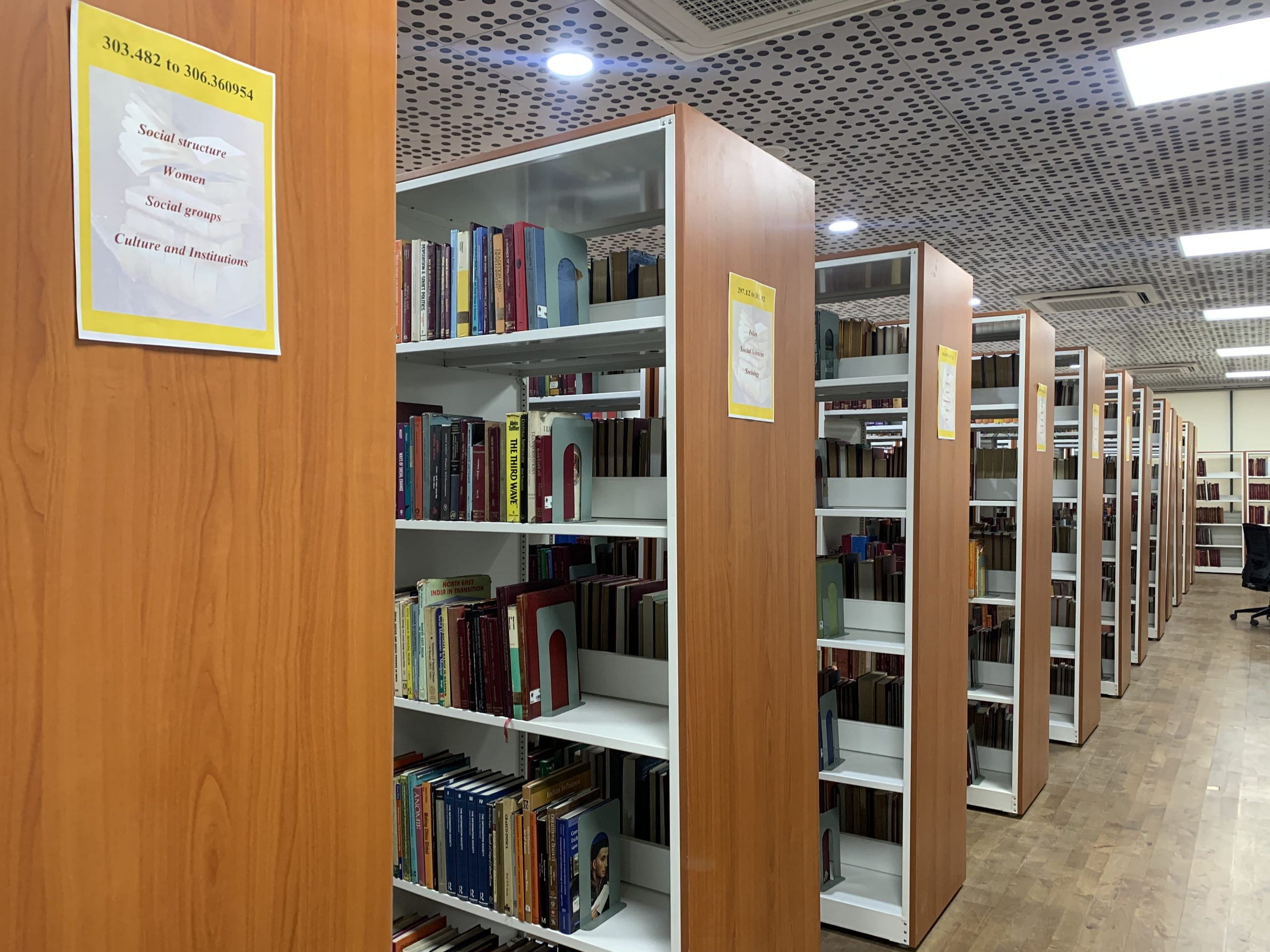
IGNCA is also nurturing the next generation of cultural scholars. Their academic unit offers PG Diplomas in both practical and theoretical subjects, such as Preventive Conservation and Applied Museology, as well as Indian Literature and Bhartiya Gyan Parampara. “We’re preparing the next generation in our field,” says Arun Kumar Bhardwaj, a member of the academic division.
And the new generation seems upbeat and ready for the task. “It’s both theoretical and practical, but we’re currently focusing more on the theoretical aspect,” says Faiz Abdin, a student at IGNCA’s diploma course in Applied Museology. He’s also an intern, working on the preservation of texts—this involves organising excel sheets and filing metadata. He remains open to working with IGNCA or with a private gallery once his internship is over. But there are advantages to working at IGNCA, he says, due to its Ministry of Culture affiliation and the abundance of projects and opportunities.
IGNCA has also collaborated with the Ministry of External Affairs (MEA) on a 100-hour module aimed at introducing foreigners to Indian cultural practices and forms of study. According to Bhagwat, art can unify “divided societies”. “ We need to break this mould and ensure that societies get united by uniting ‘truth’ and ‘Shivatva’ (divinity) of art,” he said at an event in Bengaluru earlier this month.
Since 2018, IGNCA has introduced nine short-term certificate courses, nurturing a new cohort of cultural aficionados. These courses, completed within three months, cover topics such as art appreciation, aesthetics, vastu, and Hindi language for foreign students. Starting with 50 students, enrolment has surged to 208 this year.
It’s not easy. “Nurturing culture is challenging business. It’s for generations. We need to understand the sensitivity of our problem.” Again, it transcends the pettiness of religion––it’s almost a restriction at this point. “It’s a way of life. It’s sanatan. This is for eternity,” says Joshi. It’s his final word.
(Edited by Prashant)


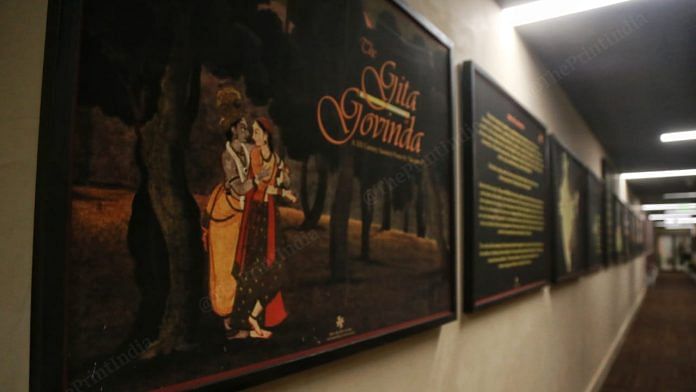

The headline- INCGA leading with “Vastu”, says a lot.